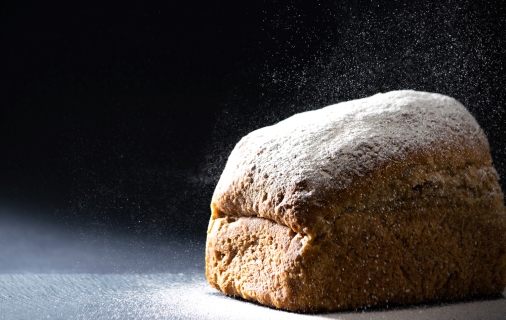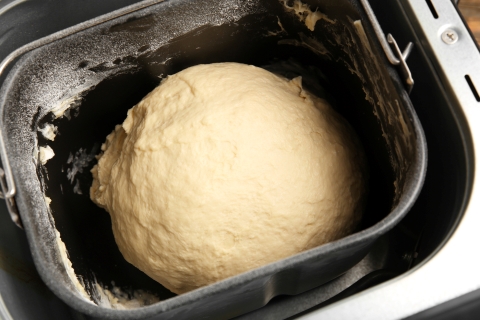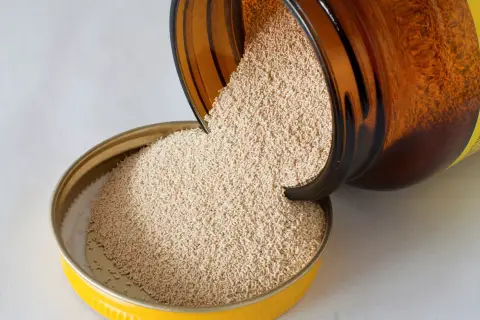The bread-making process can be tedious since there are so many factors that can go wrong. This is not to mention the actual work required in this process which is quite taxing. This has led to automating the whole bread-making procedure through a bread machine. The bread machine effectively frees you up and takes care of all the processes such as kneading, mixing, and baking itself. All you have to do is put in the ingredients as and when required.
However, despite automating the whole procedure, the chances are that your bread will still collapse in the machine. The main reason why this may happen is because of too much liquid content, but if that’s not the case, there may be other culprits behind the problem. Below, we have mentioned all the reasons why your bread may collapse in the bread machine. Keep reading to learn more!
Table of Contents
Why Did My Bread Collapse After Baking?
Beginner bakers often say that their bread machine bread always falls in the center. This should not happen usually, but there are a variety of reasons why it does.

Too Much Liquid
One of the main reasons why your bread may collapse after baking is because it has too much liquid. Decrease the milk or water in your dough by up to two tablespoons. Once you have kneaded the dough and it looks too wet, add some flour to turn it into a smooth and round ball.
Quantity, Type, or Condition of the Flour
The flour in the dough may also be the culprit behind your bread collapsing in the bread maker. Not adding enough flour or using flour that is too old or is not the right type for bread-making can cause the bread to collapse in the machine. Try to increase the amount of flour in the dough by adding additional 1-2 tablespoons when the dough feels too wet.
Not Enough Salt
Another reason why your bread may collapse is that you did not add enough salt to the dough. Next time, increase the amount of salt by 1/4 tablespoon to prevent the bread from collapsing.
Lack of Vital Wheat Gluten
If you are making whole wheat or rye bread, most of the recipes tell you to use low-protein flours. So you will need to add vital wheat gluten to make sure the dough rises and it has good elasticity. The dough does not expand as much as it should without gluten, leaving behind flat loaves of bread.
Quantity, Type, or Condition of the Yeast
When it comes to the quantity of the yeast, you have to be as precise as possible. Too much yeast can cause your bread to collapse. It may make the bread rise dramatically in the beginning, but it will fall after a while, leaving behind a flatbread. Similarly, not adding enough yeast will not cause the bread to expand enough.
So if you are adding too much yeast, make sure to decrease the amount by ½ or ¼ teaspoons. If you aren’t adding enough, increase the amount of yeast by the same ratio.
In addition to the quantity of yeast, its condition and type will also impact the quality of your bread. If the yeast is too old or if it’s not the right type, your bread will turn out flat. Moreover, if you are using dry yeast, you should know that it takes longer to work as compared to instant yeasts.
Water Temperature
Sometimes, the culprit could be the water or liquid temperature. Use a kitchen thermometer to ensure that the temperature of the water or liquid is between 90°F – 120°F. If it’s anything higher than that, it will kill the yeast in the dough, and your bread will not rise.
Measuring Error
A measuring error while adding any ingredient causes your bread to collapse in the bread machine. If you have added the wrong amount of yeast, water, salt, or any other ingredient, your bread will not rise properly. Make sure to recheck all the measurements and add all the ingredients precisely. Do not overdo or underdo anything.
Can You Open Bread Machine While Kneading?

Yes, you can definitely open the bread machine while kneading. You can check on the dough after 10 minutes of putting it in to ensure that it is not too try or too wet. If it is too dry, add some water. If it is too wet, add some flour and continue kneading. You can check on the bread more than once by opening the bread machine while kneading. It is the only stage in the bread making cycle when it is OK to do so.
Can You Open Bread Machine While Rising?
You should avoid opening the bread machine during the proofing process (while the bread is rising). Doing so would cause the heat to escape, and your bread will rise more slowly. Before the final rise, make sure you check on the bread and remove the mixing paddles. At this stage, you may perhaps want to reshape the dough according to your liking.
Can You Open Bread Machine While Baking?
No. You cannot and should not open the bread machine during the preheating and baking cycles. This will cause the heat to escape, and you will have undercooked bread with the top sinking in instead of being nicely shaped like a dome.
How to Keep Bread From Sinking in the Middle
The first step to fixing the sunken middle portion problem is to evaluate what might be causing your bread to sink from the middle. Try the recipe again with a few changes to it, depending on what you think might have gone wrong the first time. Here are some possible fixes:

The first step to keep your bread from sinking in the middle is to ensure that you are using fresh yeast. While you can check the expiration date, there are other ways of doing so. Mix a teaspoon of yeast with a teaspoon of sugar and some warm water. If the mixture starts bubbling and foaming after 15 to 20 minutes, the yeast is good to use. You may also be using too much yeast, which makes the dough initially puff up too much but then collapse. Decrease the amount of yeast in your dough by ¼ to ½ teaspoon.
Another method of preventing the bread from collapsing is to make sure all the ingredients are added step by step when putting them in your bread maker. You should put the water in first with the milk and oil. Following this, add the salt and sugar, and other dry ingredients. Try an additional 1/4 teaspoon of salt. After this, the flour is added while the yeast is added in the last.
One other reason why the bread collapses from the middle is the type of flour you have used. If you are using dry flour, it will require more moisture content as compared to moist flour. The difference in moisture content will determine the amount of water you are putting in the pan. Also add vital wheat gluten if you’re following a low-protein recipe for whole wheat or rye bread.
Can You Eat Collapsed Bread?
If you used commercial instant yeast when kneading the dough and the dough was not kneaded well or its temperature was not right, then it will taste terrible and sour. However, if you used active dry yeast and kneaded the bread long enough, you can still eat that collapsed bread. It will taste just fine.

